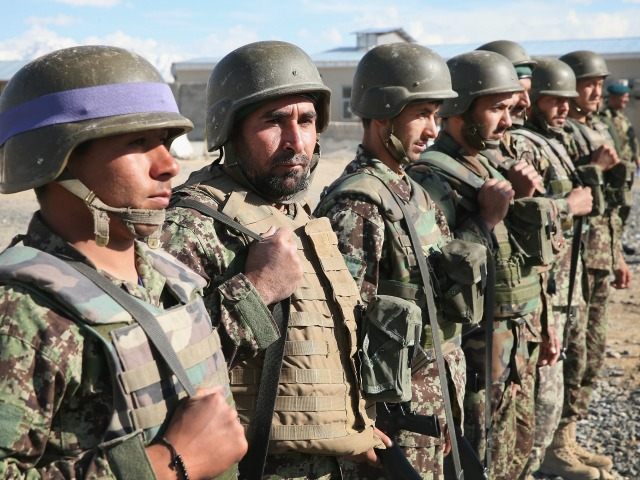The U.S.-backed government of Afghanistan is turning to China for help in expanding the “extremely limited” capabilities of the Afghan Air Force (AAF).
Amid a resurgence of Taliban-perpetrated violence across the country and a growing presence of the Islamic State (ISIS/ISIL) branch, known as the Khorasan Province (ISIL-K) in the region, Afghan officials are urging China to provide equipment to boost much-needed Afghan air power, reports Khaama Press.
During a meeting with Fang Fenghui, chief of China’s People’s Liberation Army, Hanif Atmar, Afghanistan’s National Security Adviser, requested Beijing’s support to the Afghan National Defense and Security Forces (ANDSF), which includes police and army units, including the country’s air force.
“The Office of the National Security Adviser said Mr. Atmar requested Mr. Fenghui to provide the Afghan forces with military [aid], including transport and logistics planes, mobile radars, military uniform, etc.,” reports Khaama Press.
“Hailing China for its unconditional support to Afghanistan in the past 13 years, Mr. Atmar said the Afghan government remains committed and willing to work together with China for securing mutual and regional benefits,” it adds.
Citing the office of the National Security Adviser, Khaama Press reports that Fenghui reiterated China’s commitment to support Afghanistan and promised Beijing will discuss and consider Afghanistan’s requests for military aid.
In testimony before a Senate panel on February 4, U.S. Gen. John Campbell, top commander of American and NATO forces in Afghanistan, described the capabilities of the AAF as “extremely limited.”
“One of the greatest tactical challenges for the Afghan security forces has been overcoming the Afghan Air Force’s extremely limited organic close air support capability,” the general said. “Admittedly, we began building the Afghan Air Force late and are constrained by the time it takes to build human capital.”
The lack of air support remains an issue despite nearly $70 billion in American taxpayer funds invested to train and develop an effective Afghan security force since the U.S.-led war began in October 2001.
“The ANDSF relied for many years on the U.S. military for air support to its fighting forces,” Special Inspector General for Afghanistan Reconstruction (SIGAR) John Sopko told a House panel last month. “In 2016, the Afghans still lack the air assets they need to protect and support their own forces.”
“Both the United States and Afghanistan have long recognized the importance of developing air power,” he later added.
The office of SIGAR is an Afghanistan watchdog agency appointed by congress.
Rules of engagement enacted by the Obama administration after the president declared an end to the U.S. combat mission in Afghanistan in December 2014 prohibit the American military from providing air support to its Afghan counterpart, CNN reported last month.
“The rules only permit coalition airstrikes in situations where coalition troops are directly threatened and as part of counterterrorism missions against transnational groups like al Qaeda,” it added.
However, SIGAR told lawmakers:
The impact of the lack of a well-equipped and capable Afghan Air Force became all too clear on September 28, 2015, when the city of Kunduz [temporarily] fell to the Taliban. Despite the end of U.S. combat operations and a transition to a mission focused on training, advising, and assisting, U.S. forces were one again called to provide air support to Afghan forces.
It will take an estimated three years before the Air Force is equipped and fully capable of providing close-air support, Campbell told the Senate panel, noting that it takes about three years to train a pilot.
Afghanistan reportedly welcomed China’s proposal for the formation of a joint military mechanism that would include Afghanistan, China, Tajikistan and Pakistan.
In October, Gen. Campbell warned that if the U.S. withdraws from Afghanistan, other super powers may fill in the security vacuum.
“If we’re not there to provide influence, somebody else is going to be there, whether it’s Russia, China, Iran — you name it,” he said.
Afghanistan has also turned to Russia for military support. Russia is reportedly cooperating with the Taliban to combat ISIS’ Khorasan province.
SIGAR notes that in an effort to close the Afghan Air Force’s capability gaps, the Pentagon plans to provide Afghanistan with 20 A-29 Super Tucanos at about four per year.
“The Tucano is a single-prop, aerial reconnaissance aircraft that can be armed to provide fire support for ground troops,” reports the inspector general, noting, “SIGAR also has found significant instances of waste and squandered opportunities in the critical area building up the Afghan Air Force.”

COMMENTS
Please let us know if you're having issues with commenting.